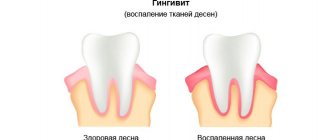BCG - a vaccine against tuberculosis - is given to the baby in the first days after birth. This is a mandatory vaccination that prevents the spread of the disease.
Not all parents know that if a child’s BCG vaccination is festering, this is a completely normal reaction, indicating the effectiveness of the injection. But the insertion site requires observation and too large a wound is a sign of a pathological process.
Independent intervention in the healing process is dangerous due to infection of the wound.
What is BCG
BCG vaccines are created from the tuberculosis bacillus that infects cattle. A weakened form of the virus is used, which allows for minimal virulence for humans. If the child does not have obvious immune or health problems, there should be no complications.
According to the vaccination calendar, vaccinations are carried out three times in a person’s life:
- from 3 to 7 days after birth;
- at 7 years old;
- at 14 years old.
The BCG vaccination not only protects against the infection itself, but also helps the body fight the virus and prevent possible complications. In addition, thanks to vaccination, it is possible to reduce the likelihood of developing tuberculous meningitis - this pathology poses the greatest danger to the lungs.
If there are contraindications, vaccinations are not given in the maternity hospital. A delay is allowed, but the vaccine must be administered up to three months of the child’s life. It is first necessary to perform a Mantoux test; administration of the drug is possible only if its reaction is negative.
Contraindications
Before vaccination, the child is examined. If there are any contraindications, it is prohibited to do BCG, otherwise the risk of complications and a poor reaction of the baby’s body increases. The list of prohibitions includes:
- the presence of HIV infection in the mother;
- prematurity;
- weight less than 2.5 kg;
- radiation therapy;
- acute illness;
- tumors;
- skin lesions;
- purulent-septic pathology;
- hemolytic disorders.
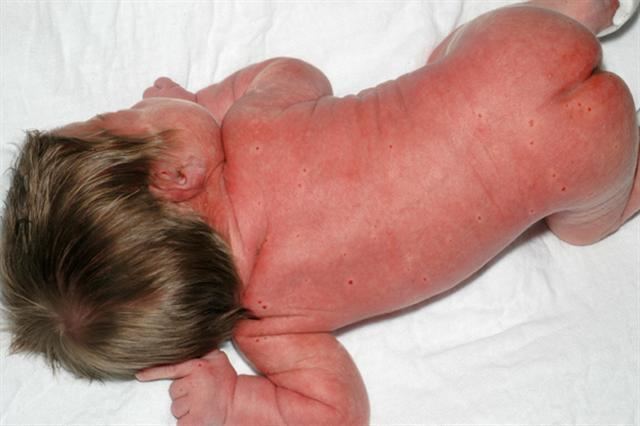
In older children, allergies, a questionable reaction to the Mantoux test, low immunity and frequent contact with a person suffering from tuberculosis also become obstacles to vaccination. Before administering the vaccine, an examination by a pediatrician is required.
After the end of the acute period of allergy or active disease, you will have to wait a month before re-vaccination. At this time, the child requires special attention and at the first suspicion of infection or an abnormal process of abscess formation, it is necessary to urgently consult a doctor.
How is the vaccine given?
According to WHO recommendations, the BCG vaccine is given in the forearm. A suitable place for vaccination is on the outside of the left arm. It is strictly forbidden to give an injection intramuscularly or subcutaneously; the liquid is injected into the skin. If for some reason an injection into the shoulder is not possible, the surface of the thigh is suitable.
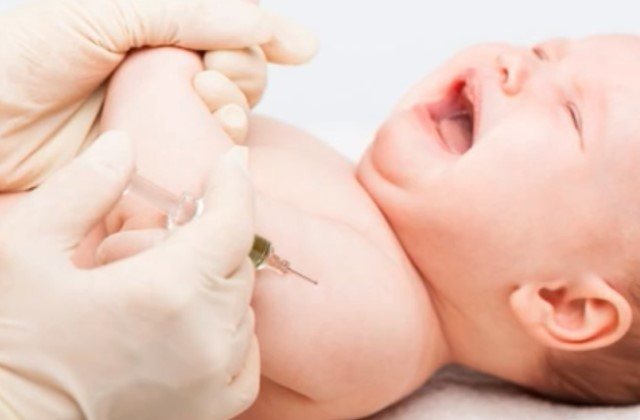
Such vaccinations are permitted only with disposable syringes. The needle should be thin and have a beveled tip. First, the doctor has to tighten the skin on the desired area of the arm. The liquid is introduced gradually so that the specialist can control the distribution of the vaccine.
If the BCG vaccination was administered correctly, a reaction appears at the injection site. A small whitish papule gradually appears on the surface of the skin, the diameter of which should not exceed 10 mm. Within half an hour it disappears when the liquid is absorbed and enters the body.
No other vaccinations are given at the same time as BCG. Therefore, if you plan to undergo other vaccinations, they will have to be postponed for some time.
Normal reaction
Within 3-4 weeks after vaccination, a cold abscess appears at the puncture site. It is an absolutely normal reaction of the body to the administration of the drug and indicates that the vaccine was administered correctly and began to act. An abscess looks like a wound in which a small amount of pus has accumulated.
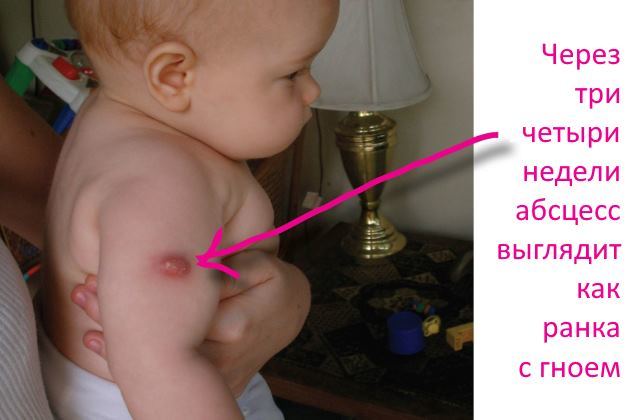
This suppuration is called cold because of the absence of specific symptoms, which include:
- headache;
- redness around the puncture;
- signs of intoxication;
- heat;
- loss of appetite;
- swelling.
The appearance of suppuration depends on the technique of introducing tuberculosis serum and the characteristics of the baby’s body. The color of the papule can be brown, bluish, red or even black. Size - about 10-12 mm. The formation is convex, obviously protruding above the skin.
Why does suppuration appear?
Suppuration is a normal reaction of a healthy body to the introduction of a virus. Local immunity is “switched on” at the puncture site. The active production of antibodies begins, which should defeat the tuberculosis bacilli. In the process, lymphocytes and bacterial cells are destroyed.
The process of “ripening” of the abscess continues for some time. It should leak out on its own, without third-party intervention. Afterwards a crust forms. The suppuration gradually passes, but the wound may refill with liquid contents. This is normal and should not cause alarm.
The average healing time is 2-3 months. During this period, the cold abscess heals completely, unless the doctor’s recommendations have been violated. The skin does not recover completely: a characteristic scar remains at the site of vaccine administration, which will remain with the person for life.
Recommendations after injection
In the first 1-2 days after vaccination, it is advisable to avoid public places. The tuberculosis vaccine is a foreign antigen to the body. All his energy is spent on the production of antibodies to form immunity. At this time, the child becomes especially vulnerable and susceptible to other bacterial and viral infections.

Do not rub the vaccine injection site with a sponge or washcloth. This can lead to injury or irritation, which can lead to secondary infection or complications.
Despite the safety of the BCG vaccine, any vaccination is a serious stress for the body. To facilitate the process of developing immunity, doctors advise providing the child with a light diet. Infants should only feed on demand and not on a schedule.
Marinades, salty foods, fatty foods and fried foods are excluded from the diet of older children. The amount of sweets and baked goods is kept to a minimum. Store-bought juices, carbonated water, fruit drinks and compotes with a high sugar content are temporarily excluded.
What does a complication look like?
The appearance of a small inflamed wound after vaccination should not cause concern to the child’s parents. It’s worse if BCG does not fester. This is the first sign that the baby’s immunity is too weak and is not able to respond normally to hostile microorganisms.

After vaccination, both parents and the local pediatrician monitor the condition of the wound. If BCG was given to a child over seven years old, you should listen to all children’s complaints. The concern is:
- temperature;
- swollen injection site;
- strong pain;
- too much suppuration;
- noticeable redness outside the wound.
Inflammation that exceeds 10 mm is evidence of a negative reaction. It is possible that the child has an individual intolerance to the components of the vaccine or an immunodeficiency. The injection site of the vaccine must be shown to the doctor.
What not to do
A cold abscess that develops normally does not require any treatment. Parents are strongly advised not to interfere with the process of formation and development of the wound. The injection site should not be:
- bandage;
- open;
- squeeze out pus;
- comb;
- treat with antibacterial drugs.
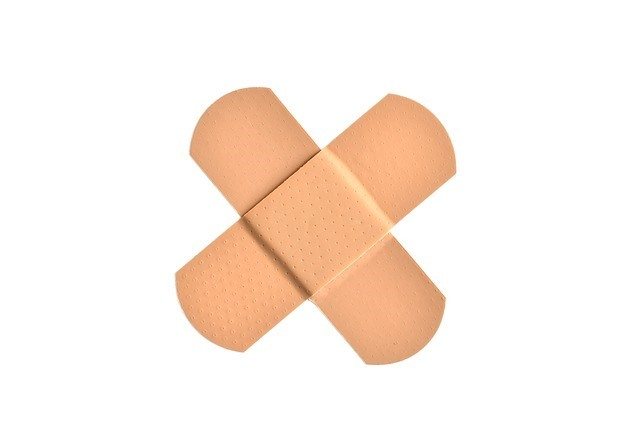
An antiseptic can destroy the tuberculosis bacillus, which will prevent the body from developing an immune response. Any mechanical damage can be dangerous. The likelihood of infection entering the wound increases, which leads to secondary suppuration and is accompanied by classic symptoms of an abscess.
It is advisable that the BCG vaccination is given on an empty stomach. Afterwards, you should not feed the baby for another half an hour. At the discretion of the physician, a sterile dry cloth can be placed at the injection site, which the parent removes independently after a while. This will help protect the wound from infection.
If there are people suffering from tuberculosis where the baby lives, he cannot return home after the vaccine is administered. This will become possible only after the patient is isolated. Its habitat will have to be disinfected. Limiting contact continues for a certain time, at least 6-8 weeks.
Possible complications
It is impossible to avoid the appearance of a cold abscess after administration of the vaccine. The only thing parents should do is make sure that the baby does not damage the abscess and that dirt does not get into it. If the natural process is disrupted, the child may experience complications. These include:
- secondary infection;
- ulcer;
- formation of a red scar;
- lymphadenitis.
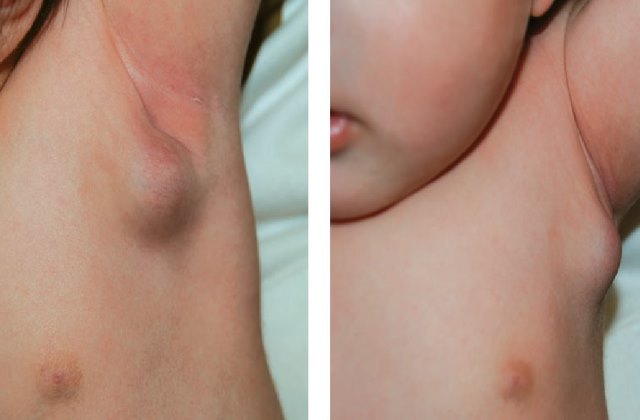
To clarify the diagnosis, you should consult a doctor. Only a specialist can make an accurate diagnosis and determine the reasons that prevented the abscess from developing normally. If the parents themselves somehow violated the recommendations, this should also be reported to the specialist. Otherwise, the effectiveness of BCG vaccination is called into question.
BCG vaccination festers in a newborn
28.06.2017
Hello dear readers. Very often, young parents are interested in the question of whether they should be vaccinated with BCG.
In this article we will look at this process and find out in what cases and manifestations the process of suppuration is considered a normal reaction of the body and when it indicates the onset of a serious pathological process, the need for urgent consultation with doctors and sometimes even surgical intervention. Let's look at another question that keeps nursing mothers up at night, namely, why BCG vaccination is not cleared.
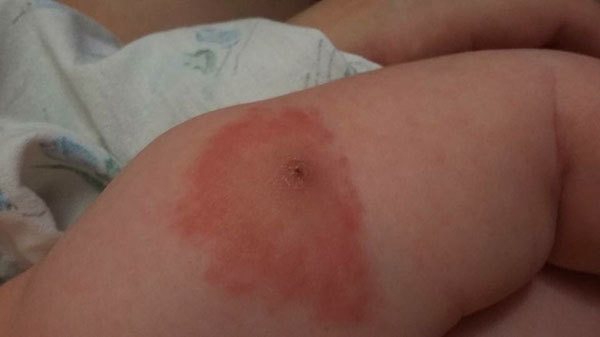
Responsiveness
Despite all the fears of parents, the formation of papules and the accumulation of purulent contents in them is a normal process and one of the phases of wound healing at the injection site:
- About a month and a half after vaccination, the injection site begins to redden and thicken. Depending on the individual characteristics of the child’s body, this may happen two weeks earlier or later.
- The next step is the formation of a papule (ampule). It has a white center (head), which over time begins to rot and form a crust. So what happens at this moment? Why does pus appear? Local immunity is formed at the injection site: the body fights (production of antibodies) against tuberculosis bacteria. The result of this process is pus. In fact, these are destroyed bacterial and lymphocyte cells. The process of pus can be lengthy and last up to several months. It ends with the formation of a crust, which then dries, falls off and releases pus.
- The last stage of wound healing is scarring at the injection site. It can form either at the age of six months or at the age of one year.
Pathological process
If the purulent process is characterized by one or more of the features listed below, you should consult a doctor. It is very likely that the process necessary for a specific treatment has begun, or perhaps even a consultation with a surgeon:
- severe pain at the injection site;
- hyperemia, which may spread beyond the injection site;
- edema;
- high fever
In most cases, this situation may be characteristic of an infection during vaccination, i.e. when the rules of asepsis are not followed. Improper storage or transportation may also occur.
When the first signs of a pathological process appear, emergency medical consultation is necessary.
In addition, there is a risk of developing an abscess, which can lead to surgery in which the contents must be opened, the pus drained out and the wound then sutured.
The most common cause of this process is improper administration of the vaccine; Instead of the intradermal route, the vaccine is inadvertently administered subcutaneously.
BCG vaccination festers, what to do
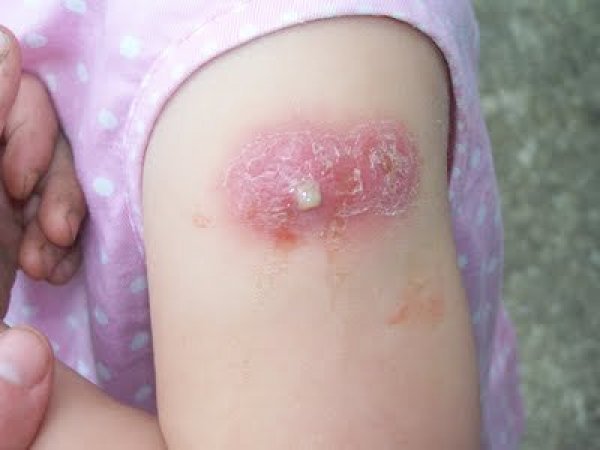
If the supupuration process is not accompanied by accompanying symptoms that may indicate pathology, treatment is not required. In addition, it is prohibited to do anything against the bubble. It is enough not to disrupt the body's immune response. Everything will disappear by itself.
If a child has a pathological abscess, he will be helped in a medical institution; if necessary, he can be treated both conservatively and surgically.
No pus
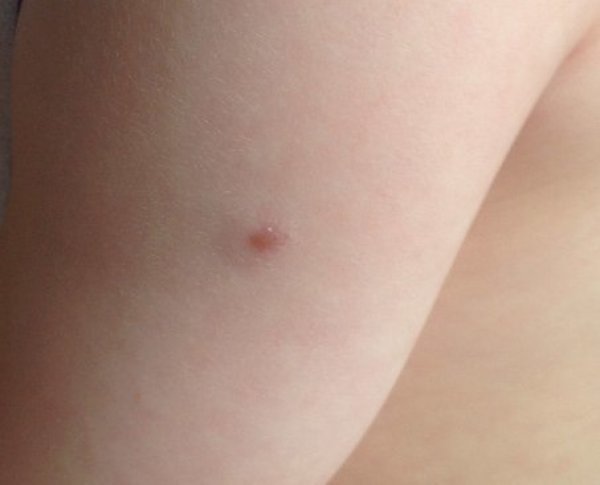
Many parents worry when pus forms in the papule, thinking that something has gone wrong, others panic when there is no pus. As you already know, the presence of pus is not always a bad symptom, as a rule, it is the complete opposite, indicating that everything is happening exactly as it should be happening. Except for what is discussed in the Pathological Process section. But what about the situation when there is no pus? In this case, the pus is usually replaced by red. And this process is normal and also marks the proper healing of the vaccination site.
BCG vaccine for bladder cancer
The BCG vaccine is used to prevent tuberculosis, but in addition, it is also used as an effective treatment for early forms of bladder cancer.
In this case, the vaccine is injected directly into the affected organ. Doctors have not yet fully studied the properties of the drug and how exactly it affects the affected cells. However, in bladder therapy, it speeds up the immune system and destroys pathological cells.
Thanks to BCG during the treatment of bladder cancer, the likelihood of relapse and transition of cancer to the invasive stage is reduced.
Therapy with the BCG vaccine is carried out in several stages:
- 6-week course of treatment;
- 6 week break;
- 1-3 week therapy, in which an injection is given once a week.
BCG does not fester
Outline of the article: Fester's first reason2. BCG vaccination does not rot, what to do?
BCG is the very first and also the most difficult vaccination against tuberculosis in the first days of life. The correct response of a child’s immune system to a vaccine depends not only on the development of vaccine protection, but also on the likelihood of complications.

Causes of suppuration
BCG suppuration occurs differently in each person, but should develop within forty-five days from the time of diagnosis. The duration of suppuration is also individual; the decrease in reaction from the time of supuration to the time of scarring can take up to two or even three months. The intensity of suppuration depends on many factors:
- lung - with a tumor up to 2.5 cm, most likely due to the child’s low immunity, with the development of a short immune memory against tuberculosis.
- Medium Pus - Pus with a swelling of 2.5 to 5 cm in diameter is a sign of a normal immune response with the production of immune long-term memory.
- Severe suppuration greater than 5 cm is almost always the result of an incorrectly administered BCG vaccination.
BCG transplantation is the result of immune control of leukocytes with injected weakened bovine tuberculosis bacteria.
The use of this strain of mycobacteria is due to the fact that, unlike the Koch bacillus, it is weak enough not to infect a child, but, unlike other strains, it is strong enough not to be immediately killed by immune cells and provoke the development of immune memory for mycobacteria generally.
Mycobacterium bovis is a special type of fungal bacterial pathogen, some strains of which cause tuberculosis in humans (Bacillus Koch), in humans and animals (Mycobacterium bovis), or only in animals and immunocompromised people.

The development of pus with the formation of a scar in its place depends on the strength of one’s own immunity and the strength of the introduced bacteria. It is assumed that the more intense and longer this process, the better the development of tuberculosis immunity.
BCG vaccination does not fester, what should I do?
If the BCG syringe is suggestive, it is normal, but is it normal if the BCG is not suggestive? BCG vaccination not only allows vaccination in three cases that are not normal.
Quite often it festers, it is only invisible to the naked eye because it lies too deep in the muscle tissue of the shoulder, and not on the surface of the skin.
This is due to the nurse’s mistake in inoculating too deeply, directly into the muscle tissue, and not under the skin.
After such suppuration, a scar also does not form, since the scar is also in the muscles, and the formation of pus is not unusual, since the pus cannot escape. An abscess can only be removed surgically and can cause tissue necrosis. Intramuscular pus does not affect the quality of the immune system.
In the second case, there is no pus due to innate immunity against tuberculosis if the introduced bacteria are simply destroyed immediately. If the child has immunity, he does not react to either the BCG test or the Mantoux test, leaving only an injection mark without swelling.
Sometimes BCG does not fester even if the vaccination technique is violated (dead vaccination, the child was sick at the time, etc.). In this case, after two months, a mantoux sample is issued, which must be negative, and a repeat vaccination with the correct purulence. In the absence of an immune reaction and innate immunity, the child will have a small reaction up to 3 mm in diameter.
In order for a child to develop relative immunity to tuberculosis, BCG should be prescribed according to all the rules, which must be followed throughout the entire implantation period, which can last up to five months. Failure to respond to 'BCG' is a fairly common abnormality, occurring in ten percent of cases. Not every child develops immunity immediately.
Absolute contraindications to vaccination against tuberculosis
BCG and BCG-M are strictly prohibited if:

- the child has congenital or acquired immunodeficiency;
- blood relatives of the child (brothers or sisters) experienced severe, widespread complications after anti-tuberculosis vaccination.
It is also unacceptable to vaccinate or revaccinate children who have had tuberculosis or were infected with microbacteria, with positive or questionable Mantoux tests.
The BCG vaccine is not administered for malignant tumors, as well as during pregnancy, if revaccination of an adult is necessary.
Vaccination is not carried out during pregnancy because it can negatively affect the fetus, causing the child to develop birth defects.
BCG vaccination festers in a newborn: what to do, reasons for the appearance of pus, how to avoid complications
Hello dear readers. Very often, young parents are interested in the question of whether BCG vaccination should be saturated.
In this article we will look at this process and find out in what cases and manifestations the process of suppuration is considered a normal reaction of the body and when it indicates the onset of a serious pathological process, the need for urgent consultation with doctors and sometimes even surgical intervention. Let's look at another question that keeps nursing mothers up at night, namely, why BCG vaccination is not cleared.
What is the BCG vaccination?
BCG is a foreign abbreviation for BCG - Bacillus Calmette. Vaccination is on the list of mandatory vaccinations, but not everyone knows what kind of medicine it is and what it is intended for.
The drug should protect people from tuberculosis. A live but very weak strain of the tuberculosis bacillus is used to make the medicine. This is not dangerous for the child, since he is raised in an artificial environment.
The main features of the vaccine are as follows:
- used to prevent tuberculosis;
- not intended to protect against infection; infection in vaccinated individuals occurs in a latent form, protection is provided to transform the disease into an open form;
- prevents the development of tuberculosis in case of damage to bones and joints, dangerous forms of pulmonary infection, tuberculous meningitis;
- helps reduce infection rates in childhood
Who is recommended for BCG vaccination and when is it carried out?
The BCG vaccine injects crumbs into the body while still in the hospital, usually before the third day of life.
, but sometimes on days 5-7. At the age of 7, the child receives a special sample of Mantoux with tuberculin, and if it is negative, then BCG revaccination is mandatory.
This vaccine is the first in a child’s life and, in principle, it is indicated for all healthy babies
, but currently many mothers refuse vaccination in the hospital for fear of complications.
We should not forget that tuberculosis is a very dangerous and widespread disease that affects more and more countries every year.
The BCG vaccine is an excellent way to protect the baby's body because immunity is actively developed after vaccination.
So if your child has no contraindications for this vaccination, do not put his health at risk and agree to get the BCG vaccine while he is still in the hospital.
Contraindications to BCG vaccination
As mentioned, all healthy infants are vaccinated against tuberculosis. However, there are cases when this vaccination is contraindicated
:
- If the child was born with immunodeficiency syndrome.
- The presence of severe congenital pathologies of the central nervous system.
- Severe genetic diseases (Down syndrome).
- If the child has already been born with tuberculosis.
In these situations, the BCG vaccine is completely contraindicated; it is not produced for life.
But there are also so-called relative contraindications (when the vaccine is administered not in the hospital, but a little later):
- inferiority of the deepest degree.
- The presence of inflammatory processes in the body, infectious diseases:
- Skin diseases.
- If MDR (hemolytic disease of the newborn) is present, vaccination is also delayed for some time.
Don't forget that the BCG vaccine cannot be administered at the same time as another vaccine! Every medical professional knows this, but if you are offered a combination of two vaccines, you do not agree.
BCG is festering: is this normal?
BCG infection in a newborn baby is considered normal.
The introduction of the vaccine leads to the following changes:
- A white spot appears on the skin, which disappears after half an hour.
- The vaccination spot becomes red and swollen. These symptoms are observed for three days.
- No reaction was observed for a month.
- A month after vaccination, a papule appears, which turns into a pustule.








